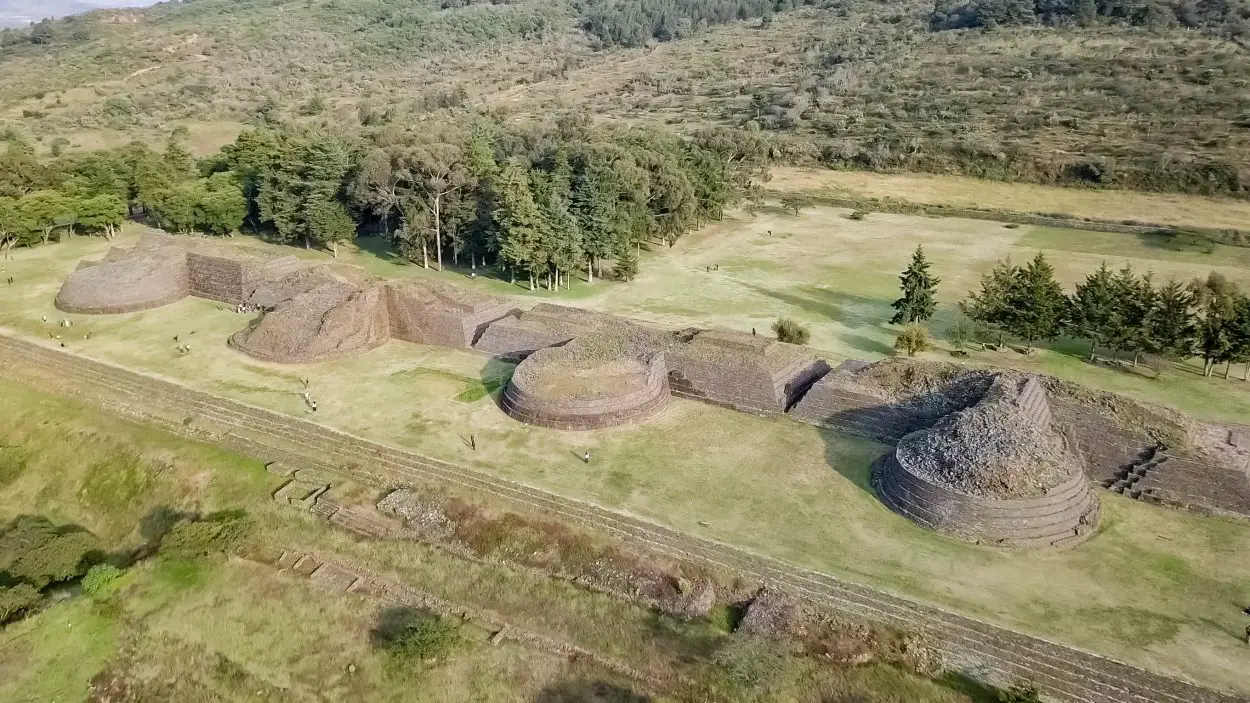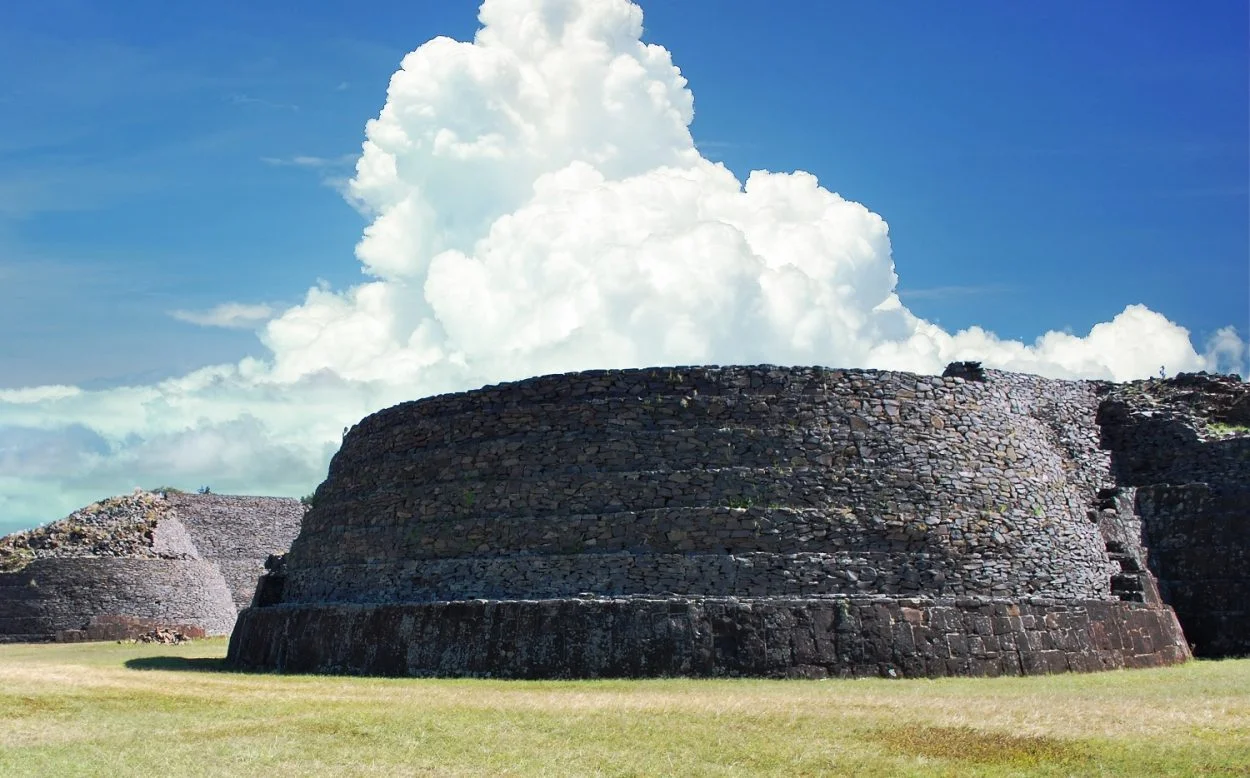Tzintzuntzan meaning “place of hummingbirds” was the capital of the Purépecha state (also called the Tarascan state), located adjacent to Lake Pátzcuaro in the municipality of Pátzcuaro, Michoacán, Mexico.
The Purépecha emerged in the early 14th century and buffered Aztec expansion to the northwest, becoming the second largest Meso-American state until their collapse following the Spanish arrival.
Little is known about the cultural history of the Purépecha as there are no surviving written records, with most accounts coming from the Relación de Michoacán written around AD 1540 by the Franciscan priest, Fray Jeronimo de Acalá, who transcribed oral histories spoken by the Purépecha elite.
After the fall of the Aztec capital of Tenochtitlan to the Spanish in AD 1521, the ruler of Purépecha, cazonci Tangáxuan II, sent emissaries to the Spanish in the hope of avoiding a similar fate. In AD 1522, a Spanish force under the leadership of Cristóbal de Olid arrived at Tzintzuntzan where he was confronted by a Purépechan army numbering as many as 100,000 soldiers.
Despite the clear military advantage, the Purépecha chose not to fight, and instead submitted to Spanish administration in the promise for a degree of autonomy over their kingdom and the payment of regular tributes to the Spanish.

This relationship did not last for long, and the conquistador, Nuño de Guzmán, captured cazonci Tangáxuan II and had him executed in AD 1530. During the next few decades, Purépecha puppet rulers were installed by the Spanish government at Tzintzuntzan, but the capital of the new Spanish province of Michoacán was moved from Tzintzuntzan to Pátzcuaro, resulting in the decline of the city until it was eventually abandoned.
The founding of Tzintzuntzan was most likely around AD 1450 during the late post-classic period, where the city was constructed on a large artificial platform on the side of Yauarato hill overlooking Lake Pátzcuaro.
The city was organised by distinct neighbourhoods of about 40 wards, each containing 25 households that centred on a ceremonial precinct, containing a large plaza and several buildings known to house priests and nobility.
The most distinct of the monuments at Tzintzuntzan are five yácata pyramidal structures, which unlike Aztec or Maya pyramids were rounded keyhole shaped structures linked together by stepped pyramidal platforms. On each of the yácatas was a temple made of wood, in which the most important rites of the Purépecha people and government took place, including burials, of which about sixty have been found.
Header Image Credit : Thelmadatter – CC BY-SA 3.0 (Adapted)





